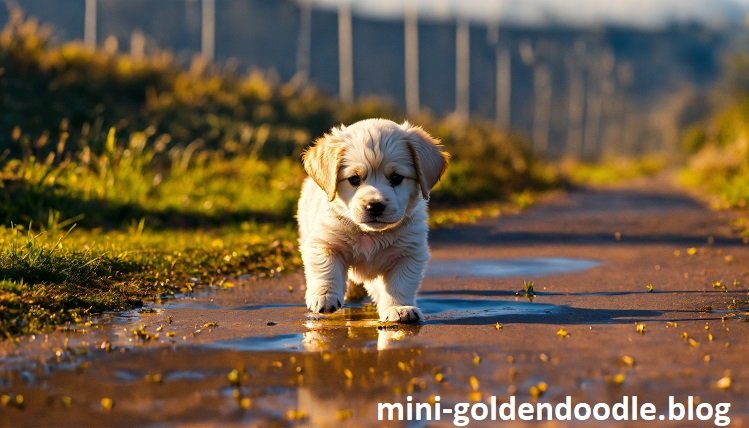Introduction
While getting a new dog brings excitement and challenges, one of the biggest ones is housebreaking. Puppy pads can be very helpful in this process, providing you and your new pet with ease and peace of mind. We’ll go over all you need to know about puppy pads in this extensive guide, including their types, advantages, and practical applications.
What are Puppy Pads?
A puppy’s urine is absorbed and contained by puppy pads, sometimes referred to as pee Puppy Pads or training pads. These pads, which are usually constructed with multiple layers of absorbent material and a waterproof backing, give your puppy a dedicated area within the house to relieve themselves, which is convenient and helps to reduce accidents.
Benefits of Using Puppy Pads
Puppies and their owners can benefit greatly from using puppy pads. They offer a practical and clean way to train indoor pets while shielding carpets and surfaces from smells and stains. By guaranteeing a specific area for pups to relieve themselves, they provide busy owners with piece of mind and encourage excellent housebreaking habits from an early age.
Types of Puppy Pads
There are several varieties of puppy pads to meet different training requirements. While scented puppy pads use attractive scents to attract puppies, standard puppy pads offer basic absorbency with a leak-proof bottom layer. Grass-scented pads encourage outdoor toilet habits by simulating the outdoors. Small rooms can benefit from the use of activated carbon pads indoors as they aid in odor neutralization.
How to Choose the Right Puppy Pad
It’s important to take size, absorbency level, durability, and smell preferences into account when selecting a puppy pad. Bigger breeds can need larger pads, and accidents-prone puppies should use more absorbent pads. Sturdiness guarantees the pad stays intact while in use, and scent variations accommodate various training objectives, such as neutralizing or drawing in smells.
Using Puppy Pads Effectively
Puppy pads should be strategically placed in easily accessible areas and should be reinforced when your puppy uses them correctly. The pad can be gradually moved closer to the door to promote outside behaviors and a seamless transition to outdoor potty training. Your puppy will acquire and maintain excellent toilet habits if you follow a consistent schedule and keep an eye on their conduct.
Training Your Puppy to Use Puppy Pads
Puppies need to be trained to use puppy pads, which takes time and consistency. Introduce the pads in a specified restroom and give gifts and appreciation to those who use them correctly. Establishing a regular schedule and gently correcting when accidents happen support positive behavior and lay the groundwork for effective indoor toilet training.
Common Mistakes to Avoid
You may keep your puppy’s training from becoming confused by avoiding typical blunders include using pads inconsistently, having too few on hand, ignoring accidents, and relying too much on them. Clear expectations are established by consistent training methods and prompt corrections, which facilitate quicker learning and more seamless transitions throughout the toilet training process.
Transitioning from Puppy Pads to Outdoor Potty Training
When your dog moves from using puppy pads to practicing outdoor toilet training, it’s a big developmental step. Encouraging outdoor toilet habits involves gradually putting the pad closer to the door and providing verbal signals. New habits are reinforced by positive reinforcement and a regular timetable, which helps to progressively phase off indoor pads and encourage outside freedom.
Cleaning and Maintaining Puppy Pads
Hygiene and efficacy can be maintained by changing puppy pads on a regular basis and clearing up spills right away. Odors can be controlled by adding baking soda or using odor-neutralizing pads; pads should be kept dry and easily available to ensure they are always ready for use. Maintaining pads properly prolongs their life and helps with continuous toilet training.
Environmental Considerations
Choosing environmentally friendly or biodegradable puppy pads is one way to minimize your influence on the environment. In addition to lowering your carbon footprint and promoting sustainability, responsible disposal techniques and the investigation of reusable alternatives help you efficiently and responsibly train your puppy to potty indoors.
Conclusion
To sum up, puppy pads are useful for housebreaking your new dog, offering ease, and assisting in the development of hygienic habits. You may make the housebreaking procedure go more smoothly and successfully by being aware of their advantages, selecting the appropriate kind, and utilizing them skillfully. To use puppy pads effectively, keep in mind that persistence, patience, and positive reinforcement are essential.
FAQ
How often should I change puppy pads?
Puppy pads should be changed often; ideally,Puppy Pads this should happen after every use or whenever they get dirty.
Can puppy pads be used for older dogs?
Yes, older dogs—especially those with movement problems or incontinence—can utilize puppy pads.

